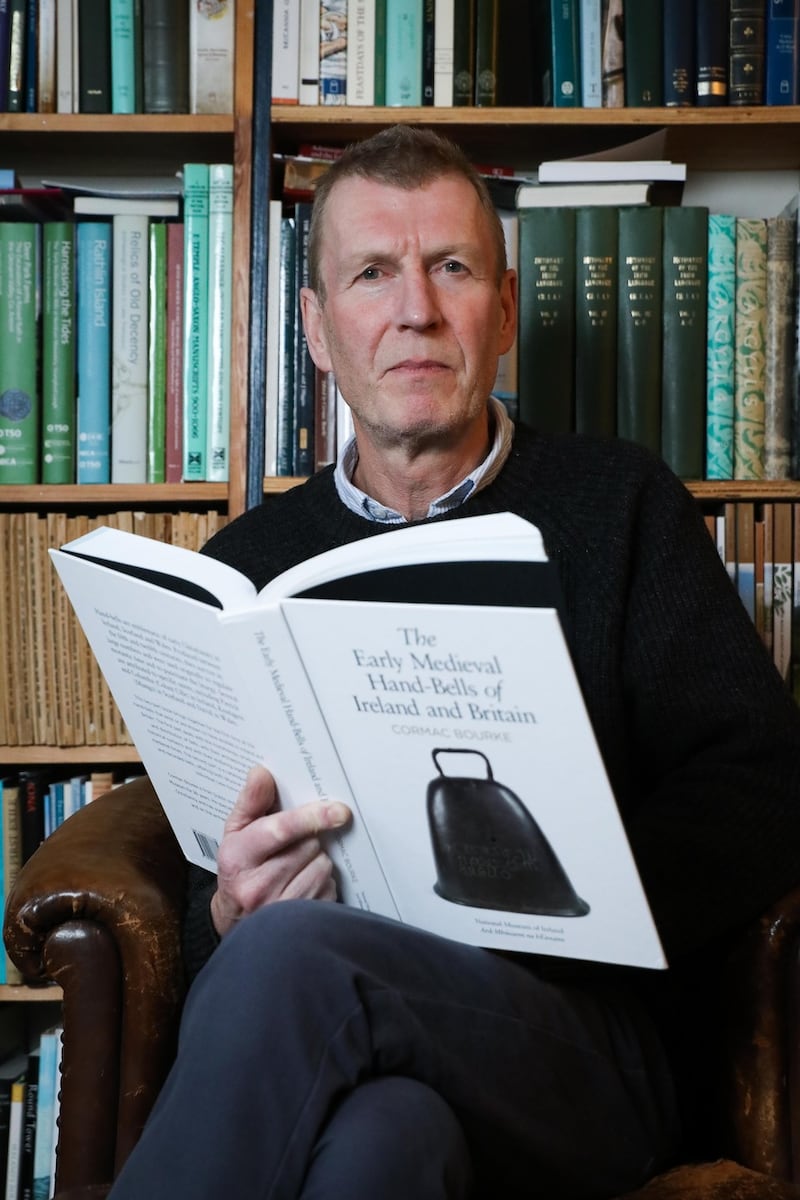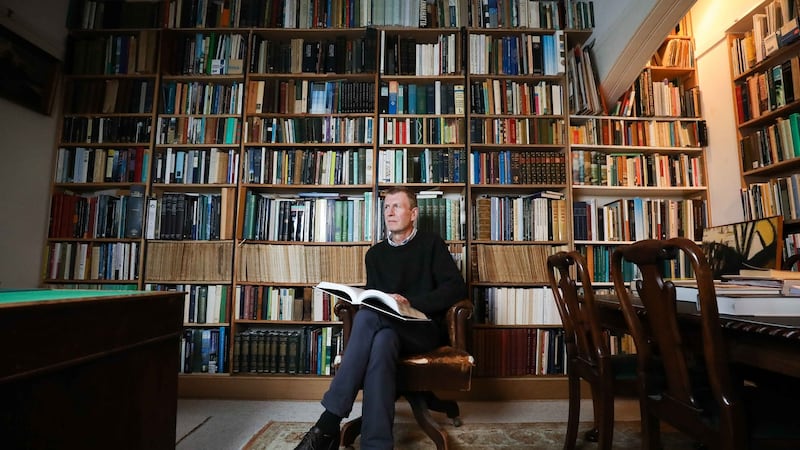Four-sided hand-bells are emblematic of the early Irish church. They were used from St Patrick’s time in the 5th century and – like the cow-bells they copied – were made at first from sheet iron.
Serving initially to regulate monastic life, they soon came to be rung both in the liturgy and in wider Christian ritual. By the 9th century bells of cast bronze were being produced, probably under Armagh auspices, and production was maintained until the 12th century. Between the 9th century and the later middle ages, several iron bells were enshrined in protective and decorative metal casings. Pride of place goes to the shrine of St Patrick’s bell, commissioned within a few years of 1100 by the abbot of Armagh and the high king of Ireland.
But as the title of my book, The Early Medieval Hand-Bells of Ireland and Britain, suggests, the story isn’t just about Ireland. Indeed, the signs are that monastic bell ringing – and therefore the art of bell making – began in Britain (specifically in Wales) and was copied by Irish communities.


The Irish presence in Iona and its satellite churches later brought the fashion to Scotland, so that quadrangular hand-bells were eventually distributed throughout Ireland, Scotland and Wales. But, for whatever reason, Ireland has the largest share. Some 80 bells of either iron or bronze survive from Ireland; those of Scotland and Wales are fewer and number 19 and six respectively.
The Early Medieval Hand-Bells of Ireland and Britain is a two-part book. The first part deals with the study of bells, with the history of commentary and collecting, with the morphology, production and distribution of bells, with archaeological and historical contexts and with the enduring significance of bells in late medieval times.
The second part is a catalogue of all existing and recorded bells – totalling 300 – in which I present both physical descriptions and individual case histories. The text is supported from beginning to end by hundreds of illustrations and by 14 maps.
Throughout their geographical range, bells were associated by tradition with famous saints and were preserved by hereditary right in certain families, and it is the uniformity of this tradition from Co Kerry to the Orkney Islands that will most strike the modern observer.
But whereas objects linked with “popish superstition” were destroyed wholesale during the 16th-century Reformation (and subsequently), especially in Scotland, it seems that bells in general escaped this fate.
Key factors in their survival were perhaps that bells are devoid of overt symbolism and were retained in churches for the purpose of convocation and funeral accompaniment. Indeed, the tenacity of the tradition of funeral accompaniment, disrupted in Ireland by the Famine, may have determined their preservation by tacit consensus.
And so it has come about that early medieval hand-bells were typically the possessions of Catholics in post-Reformation Ireland and, in three cases (Omagh, Rostrevor and Culdaff), are today the property of Catholic parishes, whereas in Wales and Scotland they are the property respectively (outside museums) of the Representative Body of the Church in Wales (part of the Anglican Communion) and of Presbyterian kirk sessions.
This cannot be said of any other category of early medieval ecclesiastical metalwork in Ireland and Britain, and it follows that bells are the pre-eminent symbols of the shared material culture and value system of the medieval Celtic-speaking church. That they exist in small numbers in Brittany and formerly existed in Cornwall reinforces the validity of this observation.
Interesting though the big picture is, it is the significance of bells at local level that stays with me. Consider, for example, St Patrick’s bell itself, even if our patron saint probably never used it. First referred to in 1044, the bell was enshrined c. 1100 and is the subject of eight further references between 1166 and 1530.
It was kept from 1100 by the family of O’Mulholland (Ó Máel Chalainn), sometimes by that of O’Mellan (Ó Mealláin), and migrated with them from Co Armagh to Co Tyrone, where the bell gave Ballyclog, Baile an Chloig, its name, and from Co Tyrone to Co Derry, where a tradition alive to this day records its burial for safekeeping in the Mulhollands’ garden at Mayogall near Maghera, probably during the United Irishmen rebellion of 1798, and its recovery c. 1817.
Consider too the bell (now unfortunately lost) from Magheralin, Co Down, probably attributed to its patron Rónán Finn. Kept locally in the Lavery (Ó Labhradha) line, this bell came into the possession of Lord Moira, was transferred to Montalto House beside Ballynahinch, Co Down, was later transferred to Moira House on Usher’s Island on the Dublin quays, was taken back to Co Down for the funeral of a Lavery who had fought (for the British) in the American War of Independence, and was moved yet again to Granard, Co Longford, only to disappear without trace thereafter.
Consider, finally, the bell attributed to St Leo of Inishshark, Co Galway, now likewise lost, last heard of in the 19th century being “cut up into pieces which were worn as amulets” and taken to America by emigrants. How miraculous if a reader could now tell us that one of these “amulets” survives.
You can see about a dozen Irish bells on exhibition in the Ulster Museum in Belfast, five in Armagh Robinson Library and four in Limerick in the Hunt Museum. But the majority are both housed and exhibited in Dublin in the National Museum of Ireland, principally in The Treasury, Glendalough: Power, Prayer and Pilgrimage and Viking Ireland exhibitions at The National Museum of Ireland-Archaeology on Kildare Street.
Due to Covid-19 Level 5 restrictions, the National Museum of Ireland is closed to visitors until further notice, but these exhibitions can be viewed virtually in great detail at www.museum.ie. Admission is free when it is open to the public.
The National Museum, I am proud to say, is the publisher (in association with the Wordwell Group) of The Early Medieval Hand-Bells of Ireland and Britain. It's a resource for our shared islands, I hope. Early Medieval Hand-Bells of Ireland and Britain is available from bookshops nationwide or online.
Author Cormac Bourke specialises in the study of early insular Christianity and was a curator of Medieval Antiquities at the Ulster Museum in Belfast for 26 years










